Thinking About a Spiral Staircase? Read This First.
I built my first spiral staircase for a client’s library loft a couple of decades back. The plans looked straightforward on paper, but let me tell you, turning flat steel into a safe, elegant curve was a masterclass in precision. Every single piece had to be perfect. Every weld, every angle… it all mattered. Since then, I’ve fabricated and installed dozens, from simple metal units in workshops to intricate oak staircases in high-end homes. I’ve also been called in to fix a whole lot of them that were built poorly.
In this article
- How This Thing Actually Stays Up
- Let’s Talk Money: What a Spiral Staircase Actually Costs
- Choosing Your Material: A Look at The Real-World Options
- The Rules You Can’t Ignore: Code, Comfort, and Safety
- The Honest Truth About Living with a Spiral Staircase
- How to Find a Pro Who Won’t Mess It Up
- Galerie d’inspiration
See, a spiral staircase isn’t just a pretty design feature. It’s a complex piece of engineering tucked inside your home. People love the look and how they save space, but very few understand the physics, the strict building codes, or what it’s actually like to live with one day-to-day. So, I want to pull back the curtain and share what I’ve learned from years in the workshop and on job sites. This is the real-world guide you need to make a smart decision, not just one based on a slick photo.
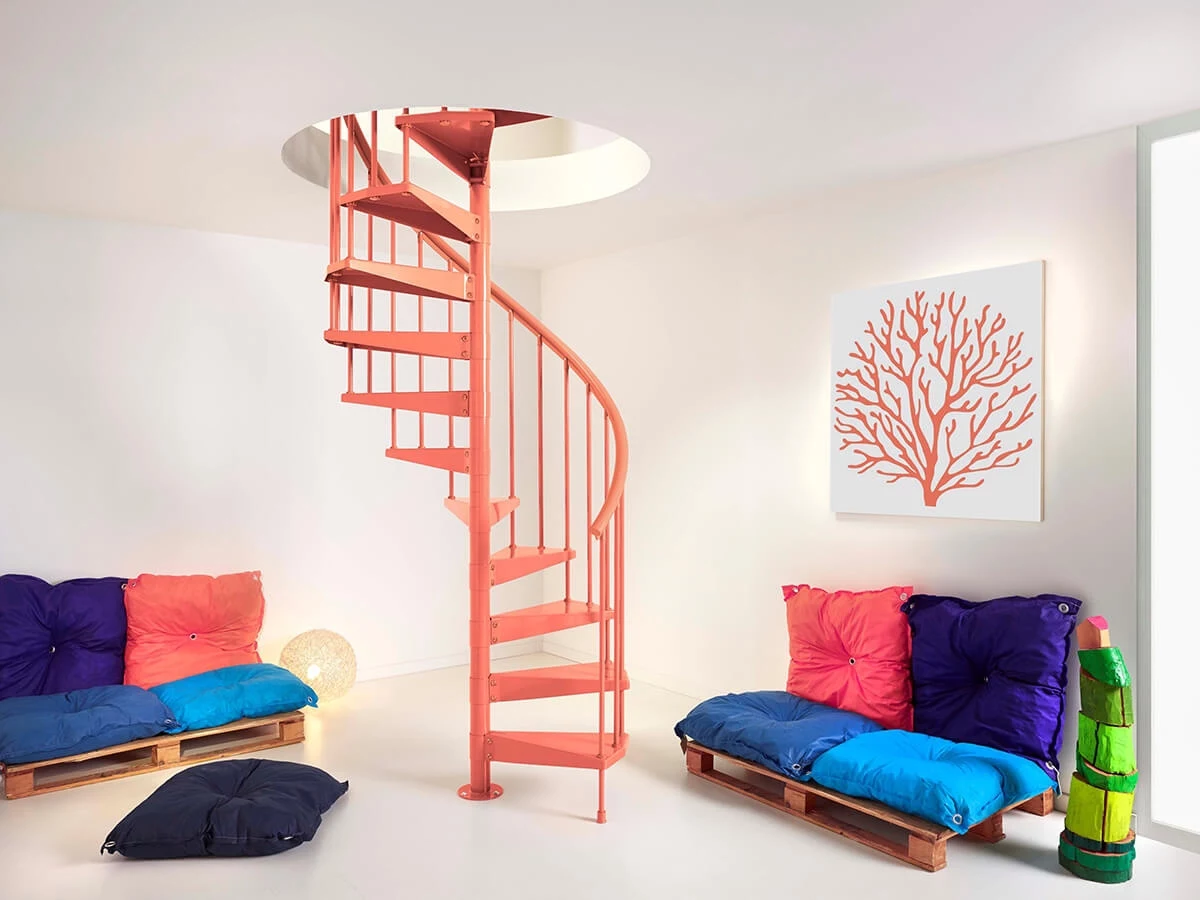
How This Thing Actually Stays Up
A spiral staircase can look almost fragile, but its strength comes from some pretty basic physics. Once you get it, you’ll see why the quality of materials and installation is so critical. It’s not magic; it’s solid engineering.
The star of the show is the central column or pole. This beefy post carries almost all the weight. When you step on a tread (the stair step), your weight pushes down and that force is transferred directly to the column. The column is constantly being squeezed, a state engineers call compression. That’s why this pole has to be made from something incredibly rigid, like a thick-walled steel tube or a solid, laminated wood post. No flimsy stuff allowed here.
The treads themselves act like tiny diving boards. They’re supported at one end by the pole and hang free at the other. The connection between the tread and the pole is, without a doubt, the most critical stress point. For metal stairs, this is a heavy-duty, professionally done weld. In a wooden staircase, it involves precise joinery, often reinforced with hidden hardware for good measure.
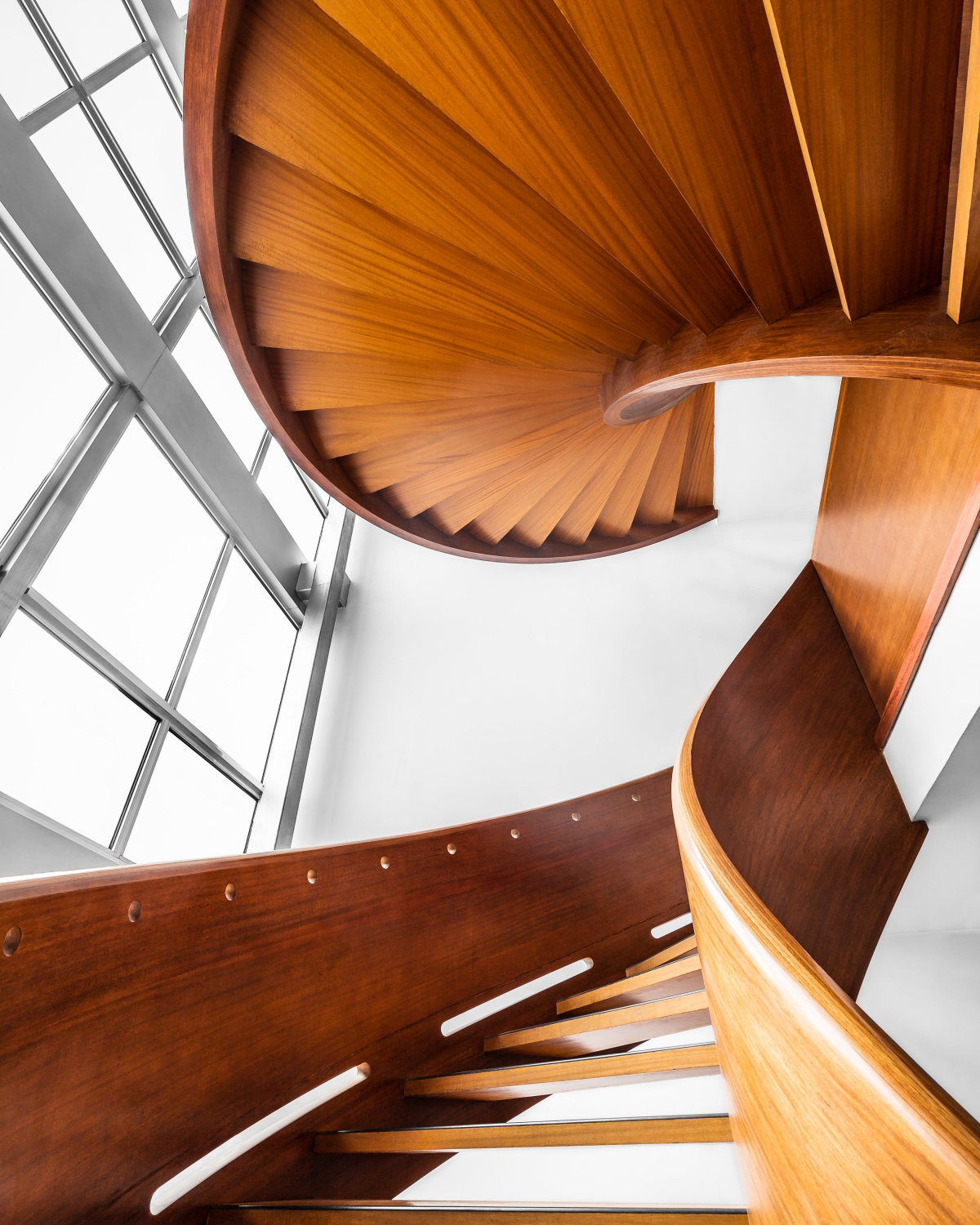
And finally, you have the handrail and the balusters (the vertical posts). Don’t be fooled—they’re not just for safety. On a well-built stair, the handrail system is a crucial structural component. It ties all the treads together on their outer edge, which prevents the whole staircase from twisting or flexing. A wobbly staircase is almost always the fault of a weak handrail. I’ve seen kits where the handrail is little more than a cheap plastic tube. A pro build uses a solid steel bar or a steam-bent piece of hardwood to create a rock-solid, continuous support system.
Let’s Talk Money: What a Spiral Staircase Actually Costs
Okay, let’s get right to it, because this is the number one question people have. The price can swing wildly, so it’s important to know what you’re paying for.
A bare-bones metal kit from a big-box store or online retailer might start around $1,500 to $3,000. It arrives in a box, and you (or a contractor) have to assemble it. To be frank, you often get what you pay for in terms of material thickness and overall sturdiness.
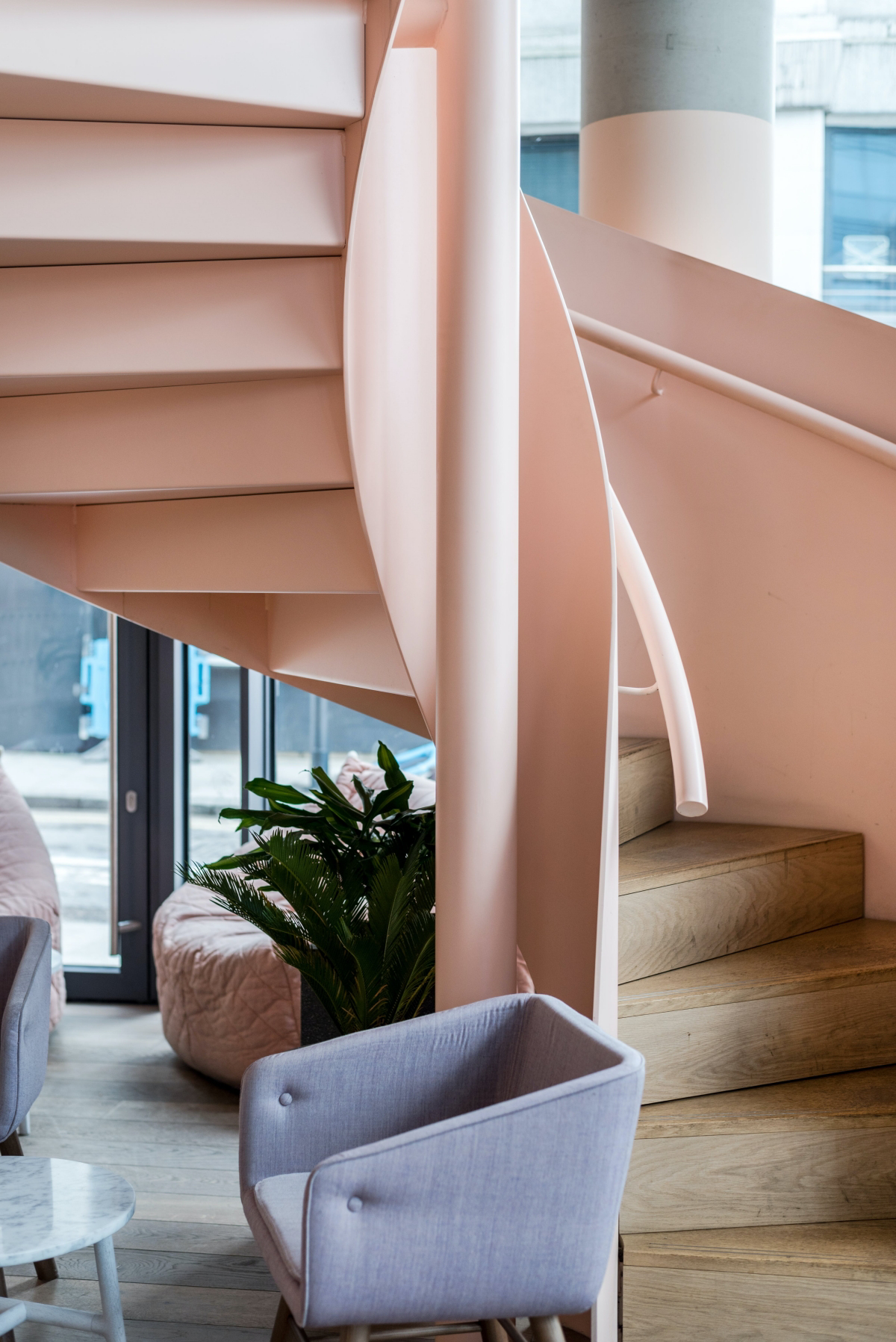
For a custom-fabricated, powder-coated steel staircase from a professional shop? You’re stepping into a different league. Expect to be in the $8,000 to $15,000 range, fully installed. Why the jump? You’re paying for heavy-gauge steel, flawless welds, a durable finish, and professional installation that guarantees it’s safe and won’t wobble.
And if you’re dreaming of a classic, custom-built hardwood staircase, say in oak or maple, the price can easily climb to $20,000 or more. This reflects the intense labor and craftsmanship involved in milling, joining, and finishing the wood to perfection.
Choosing Your Material: A Look at The Real-World Options
The material you pick is a huge part of the cost, but it also defines the staircase’s look, feel, and lifespan. Here’s the breakdown based on what I’ve seen perform (and fail) over the years.
Metal: The Industrial Workhorse
Most spirals are made of metal, usually steel. It’s strong, versatile, and the most common choice for a reason.

- Mild Steel: This is your go-to for most indoor stairs. It’s easy to work with and strong. The key is the finish. I always recommend powder coating over spray paint. It’s a baked-on finish that’s way tougher and more uniform. A painted finish will inevitably get chipped in high-traffic areas and need touch-ups. Ballpark cost is in that custom $8k-$15k range I mentioned.
- Aluminum: Lighter than steel and naturally rust-proof, aluminum is a great pick for outdoor stairs, especially near the coast. But, it’s a softer metal and can dent more easily. It’s also pricier than steel due to material cost and the specialized welding it requires.
- Stainless Steel: This is the premium, modern choice. It’s gorgeous and bulletproof against corrosion, indoors or out. The big downside is the price tag—it can easily be two or three times the cost of a mild steel stair. Oh, and it’s a magnet for fingerprints, so keep your microfiber cloths handy.
By the way, here’s a quick story. I once installed a powder-coated steel stair in a home about a mile from the ocean. To save a little money, the client chose a standard indoor-grade powder coat. Bad idea. Within three years, tiny rust spots started blooming near the welds. The salty air found every microscopic weakness. We had to pull it, sandblast it, and re-coat it with a proper marine-grade, zinc-rich primer and an epoxy topcoat. It’s a perfect example of why you need to choose the right finish for your environment, not just your budget.
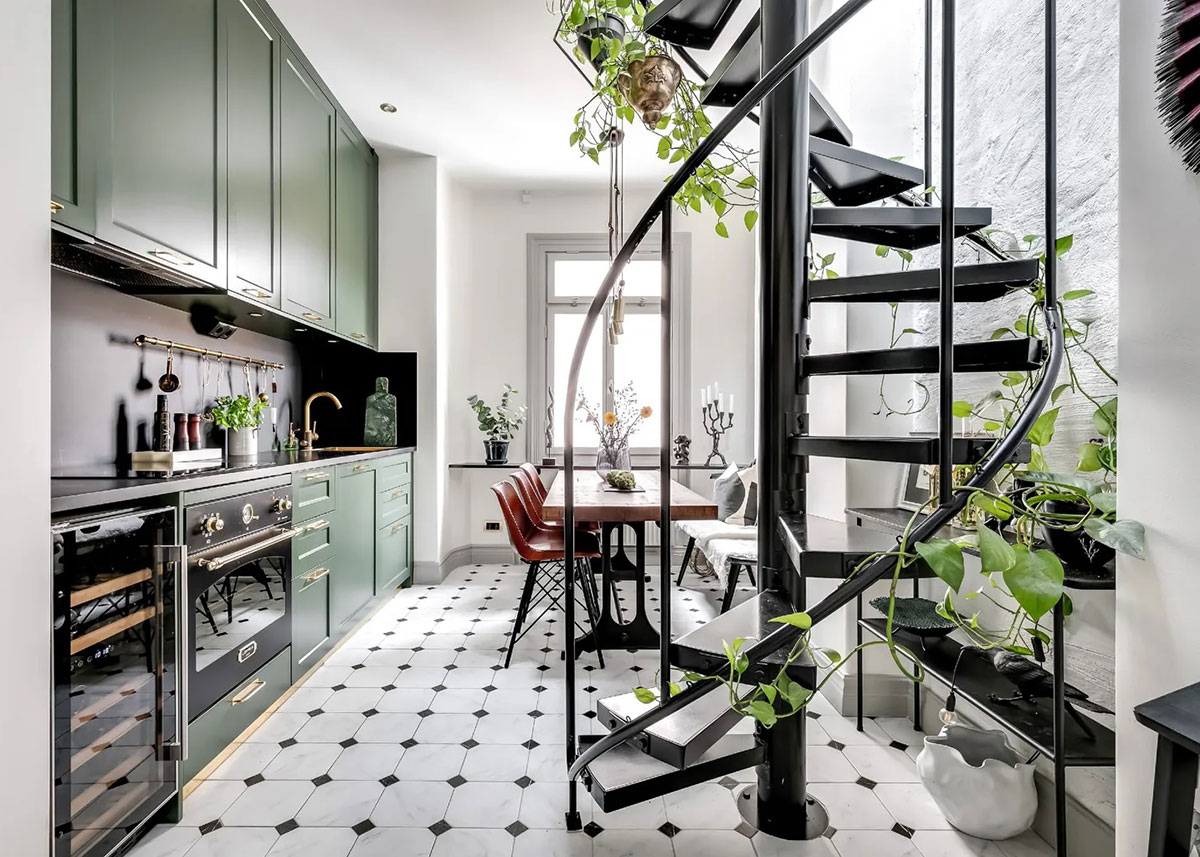
Wood: Classic Warmth and Craftsmanship
Wooden spiral stairs are just quieter. The sound is a soft, satisfying thud instead of a metallic ring. They feel warm and traditional.
- Oak (Red or White): The gold standard for a reason. It’s hard, durable, and takes a stain beautifully. White oak has slightly better moisture resistance, making it a better choice if humidity is a concern.
- Maple: Another super-hard wood, maple has a fine, light-colored grain for a cleaner, more contemporary look. It can be tricky to stain evenly, so it’s often best with just a clear protective coat.
- Pine: You might see Southern Yellow Pine used for a rustic, budget-friendly stair. But heads up: it’s a softwood. It will absolutely dent and scratch easily. I’d only ever recommend pine for a low-traffic area like a cabin or a workshop loft, never for a main staircase.
The Rules You Can’t Ignore: Code, Comfort, and Safety
This is, without a doubt, the most important section here. A staircase that doesn’t meet building codes is not only illegal—it’s downright dangerous. These aren’t just suggestions; an inspector will show up with a tape measure.
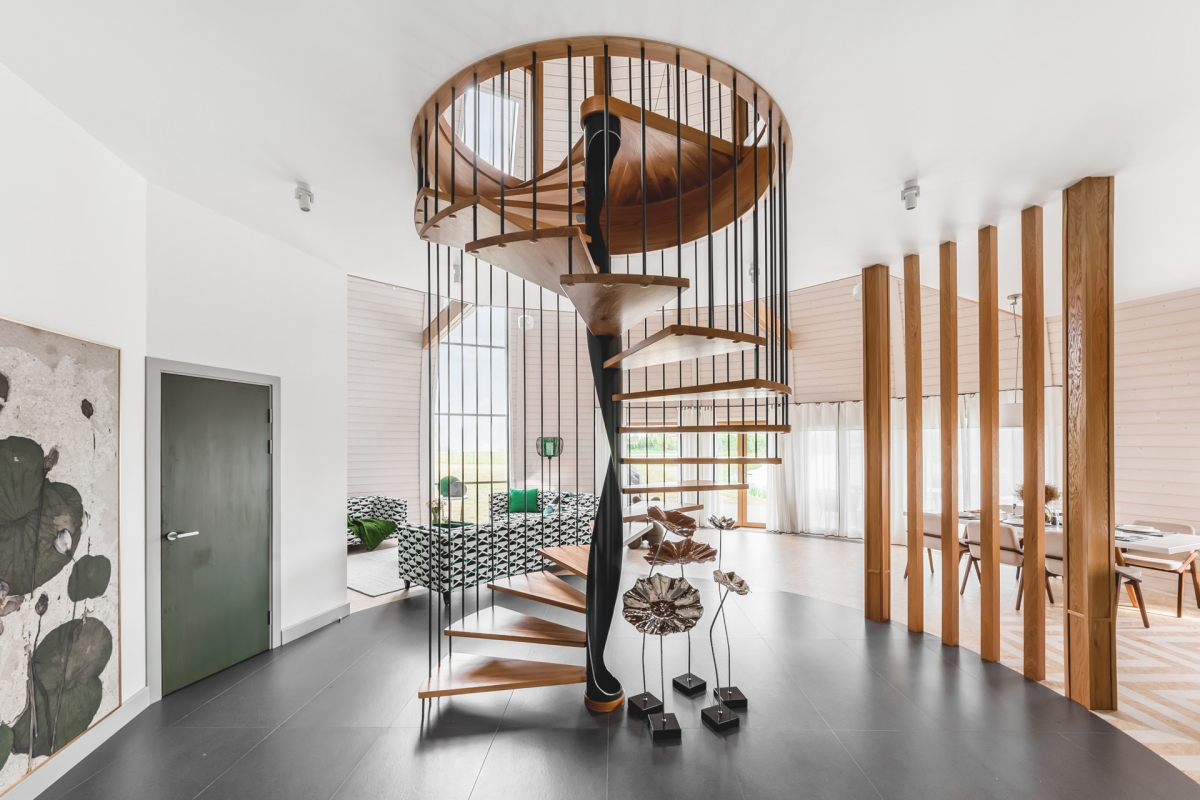
Here are the key residential rules you need to know:
- Minimum Diameter: The stair needs to be at least 5 feet (60 inches) in diameter if it’s the main way to get to a room. This sounds big, but the actual walking path is much narrower.
- Tread Depth: Each step has to be at least 7.5 inches deep at what’s called the “walk line.” Just imagine a path 12 inches out from the center pole—that’s the sweet spot where your foot lands, and it needs to be wide enough to be safe.
- Riser Height: The vertical distance from one step to the next can’t be more than 9.5 inches. Any higher and it becomes a real climb.
- Headroom: You need at least 6 feet, 6 inches of clear headroom at all points as you walk up and down. I once had to fix a job where you’d smack your head on the ceiling on the way up. It was a massive, dusty job to enlarge the floor opening.
- Baluster Spacing: The gaps between the vertical posts can’t be big enough for a 4-inch sphere to pass through. This is a critical rule to protect small children.
Pro-Tip for Homeowners: Before you get too far, grab some painter’s tape and mark a 5-foot diameter circle on your floor where you’re thinking of putting the stair. This helps you feel the real footprint and see how much space you’ll need to comfortably step on and off. It’s a 10-minute task that can save you a massive headache.
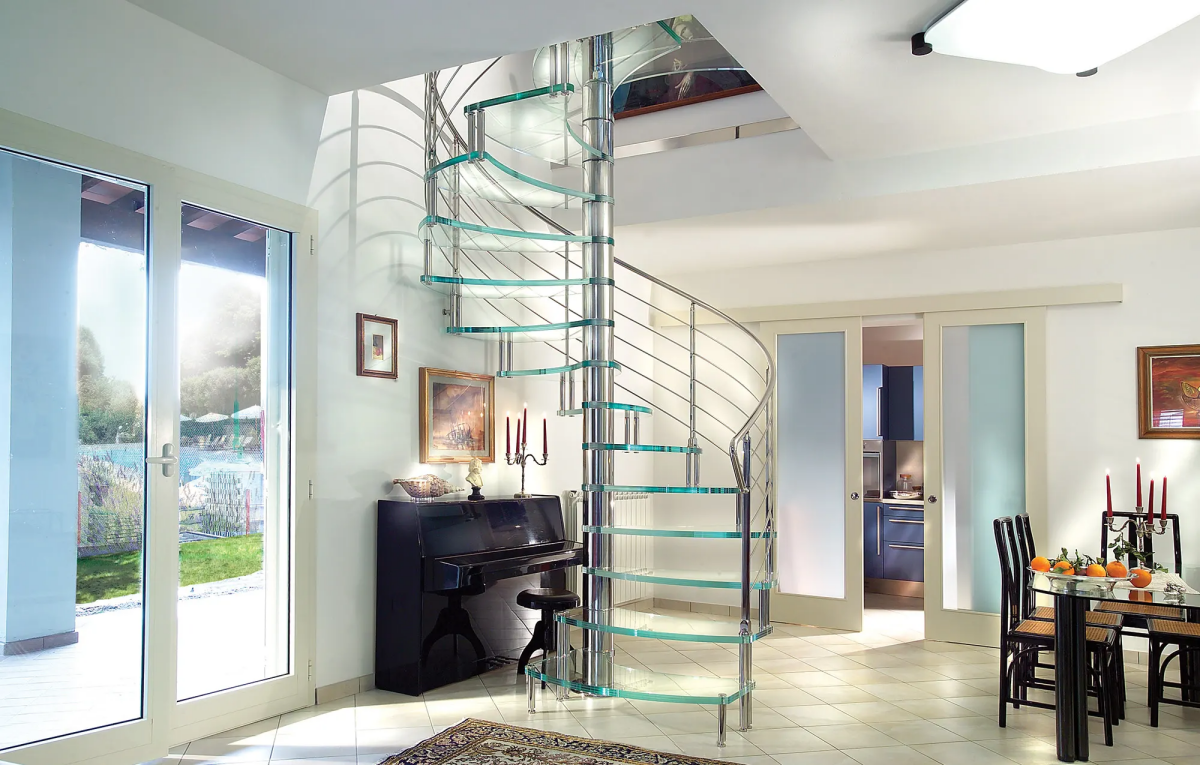
The Honest Truth About Living with a Spiral Staircase
Before you fall in love with the aesthetics, you need to think about the practical side of daily life with one of these.
First, while it does have a smaller footprint (about 20 square feet for a 5-foot stair), you still need clear space around the entry and exit points. You can’t just jam it into a corner and expect it to work well.
And now for the biggest, most important warning.
THE FURNITURE PROBLEM: READ THIS TWICE.
I’m serious. You will not get a queen-size box spring, a sofa, a large dresser, or basically any significant piece of furniture up or down a spiral staircase. Period. If this staircase is the only access to a room, you must plan your furniture around this limitation. I had a client who had to hire a crane to lift their new bed through a second-story window. Plan accordingly, or you’ll be in for a very expensive surprise.
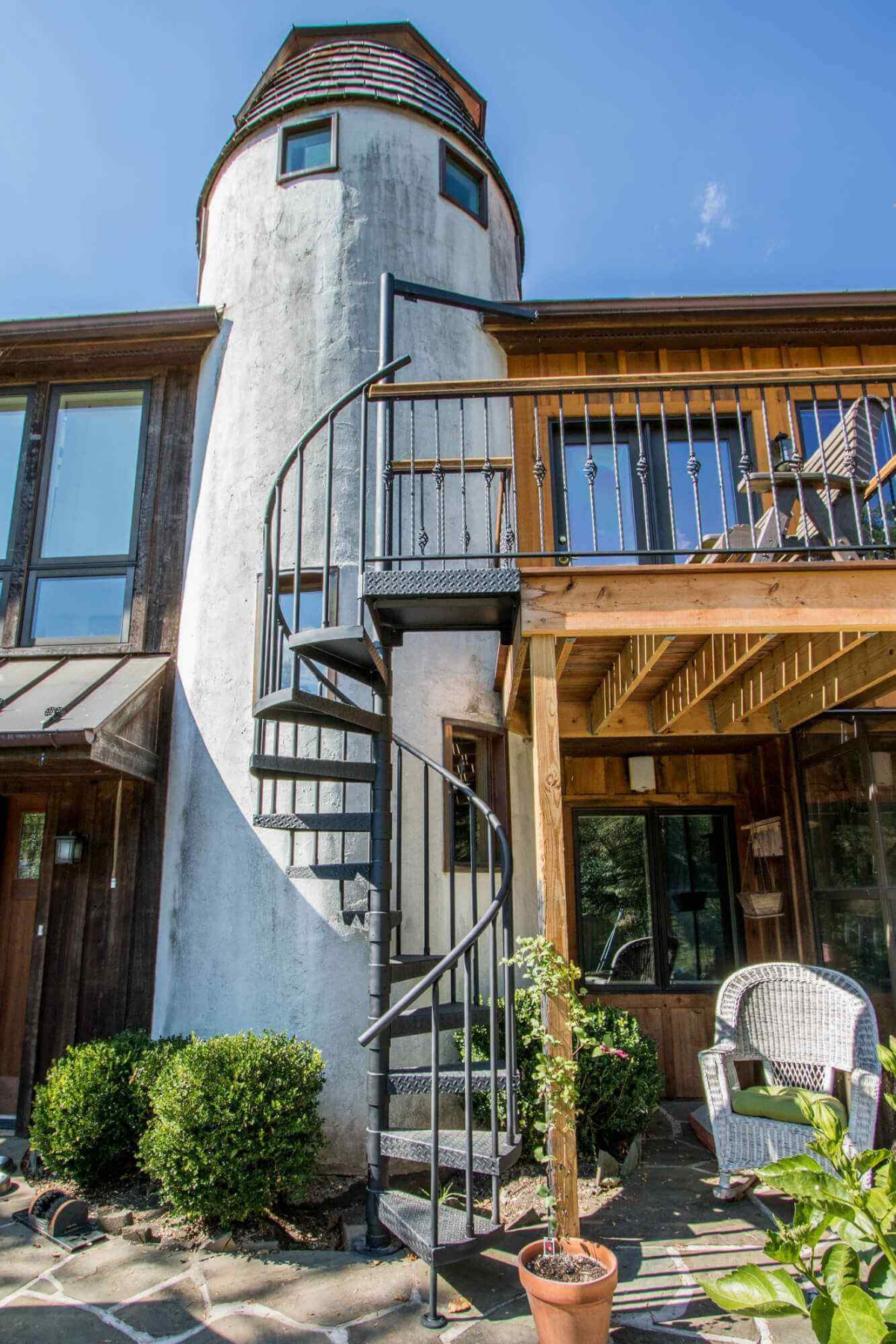
Daily use is also different. You go up and down in single file. You can’t easily carry a big laundry basket. You really need a hand free for the handrail at all times, which is a key consideration for families with small children or older adults. And good lighting isn’t optional; the spiral shape creates shadows, so dedicated lighting is a must.
How to Find a Pro Who Won’t Mess It Up
So how do you find someone who builds stairs that are solid, safe, and beautiful? It’s not as easy as a Google search. Here’s what to look for:
- Ask for a Specific Portfolio: Don’t just look at their general metalwork or carpentry. Ask to see pictures of spiral staircases they have personally built and installed.
- Check Their Knowledge: Ask them about the local code requirements. A true professional will know the specific rules for your area without even looking them up. If they seem fuzzy on the details, that’s a huge red flag.
- Ask for Shop Drawings: A pro will create detailed drawings for your approval before a single piece of metal is cut. This ensures you’re both on the same page.
- Get References (and Actually Call Them): Ask for the phone numbers of a few recent clients. Call them and ask, “Is the stair solid? Was the process smooth? Would you hire them again?”
A well-built spiral staircase is a work of art that can be a source of pride for decades. A poorly built one will be a wobbly, creaky source of constant worry. Take your time, do your homework, and invest in quality craftsmanship. It’s one of the most permanent decisions you’ll make for your home.
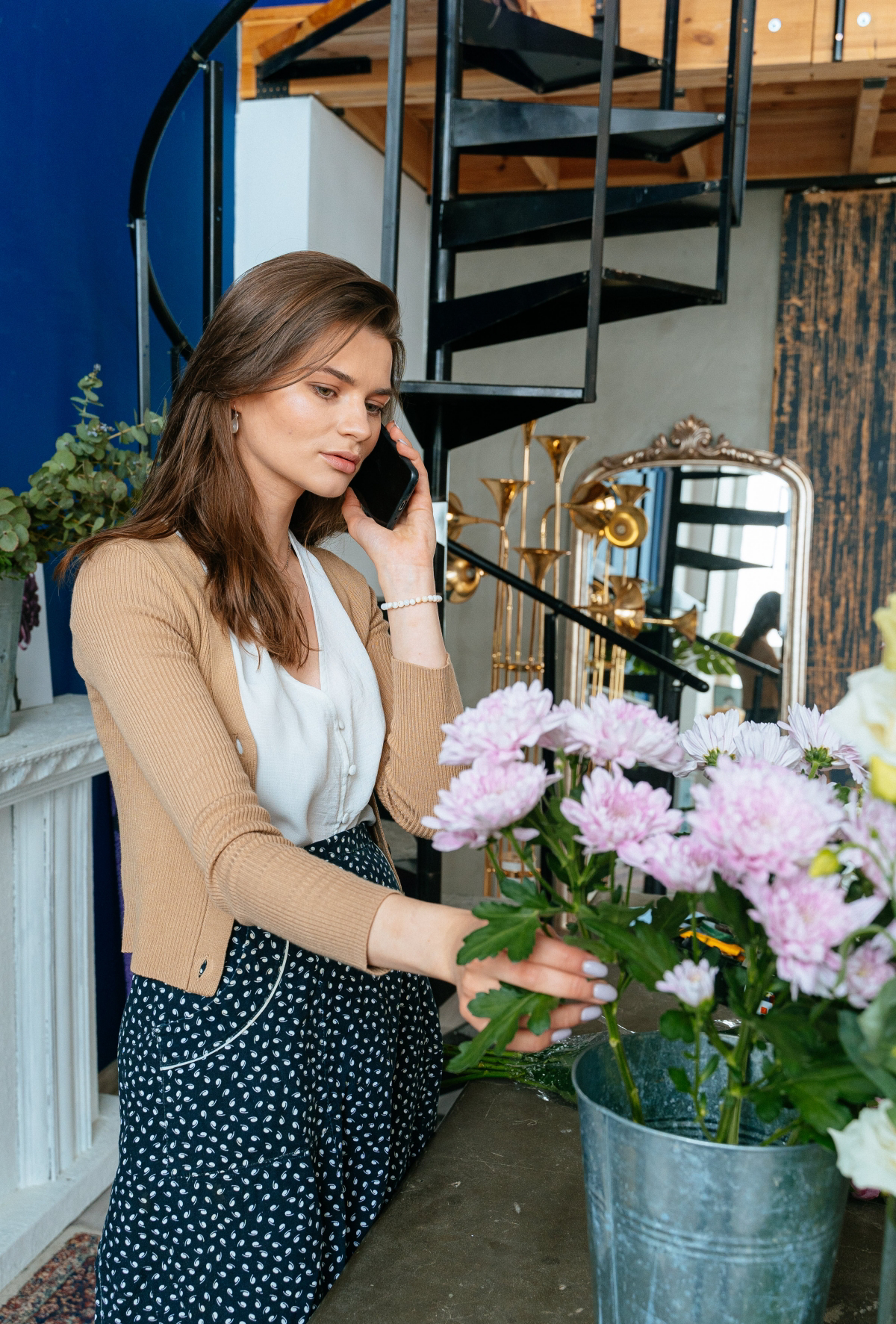
Quick win: If you want to do one thing today that will save you a massive headache later, call your local building inspector’s office. Just ask them, “What are the current residential code requirements for a spiral staircase in your jurisdiction?” Their answer is the only one that truly matters, and it’s the perfect starting point for your project.
Galerie d’inspiration
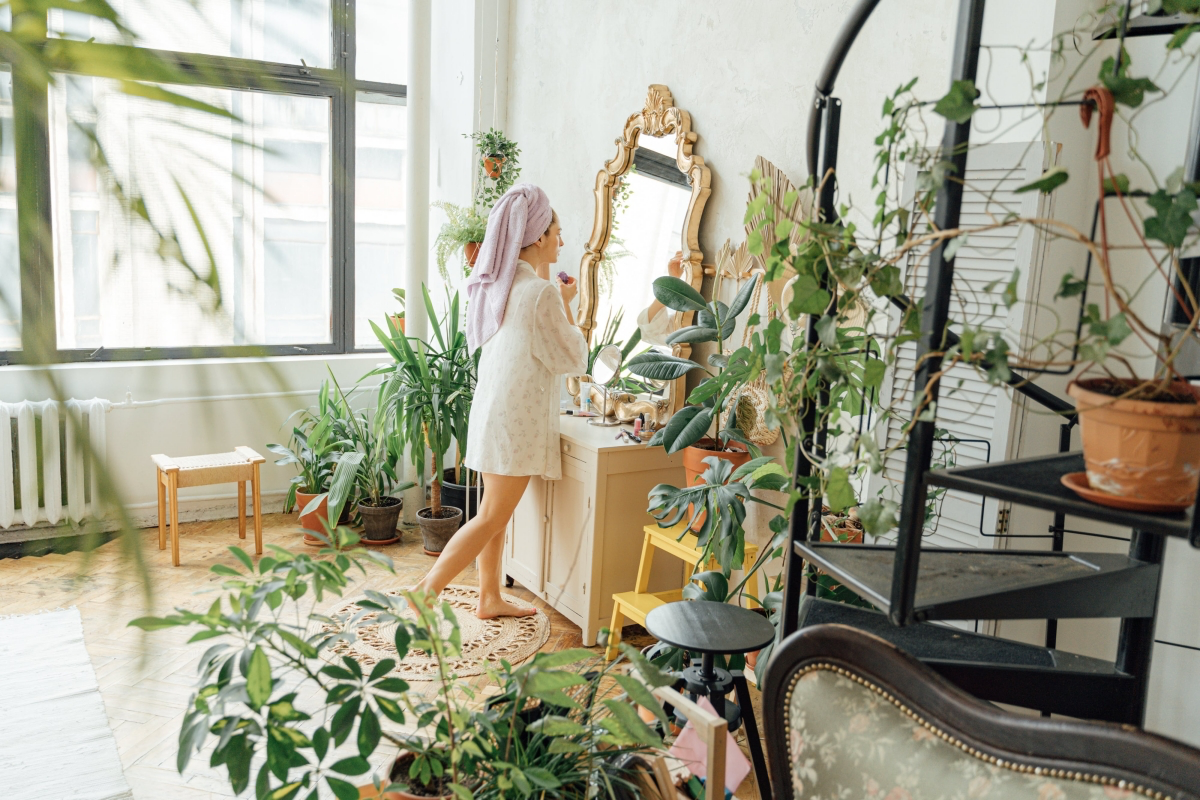
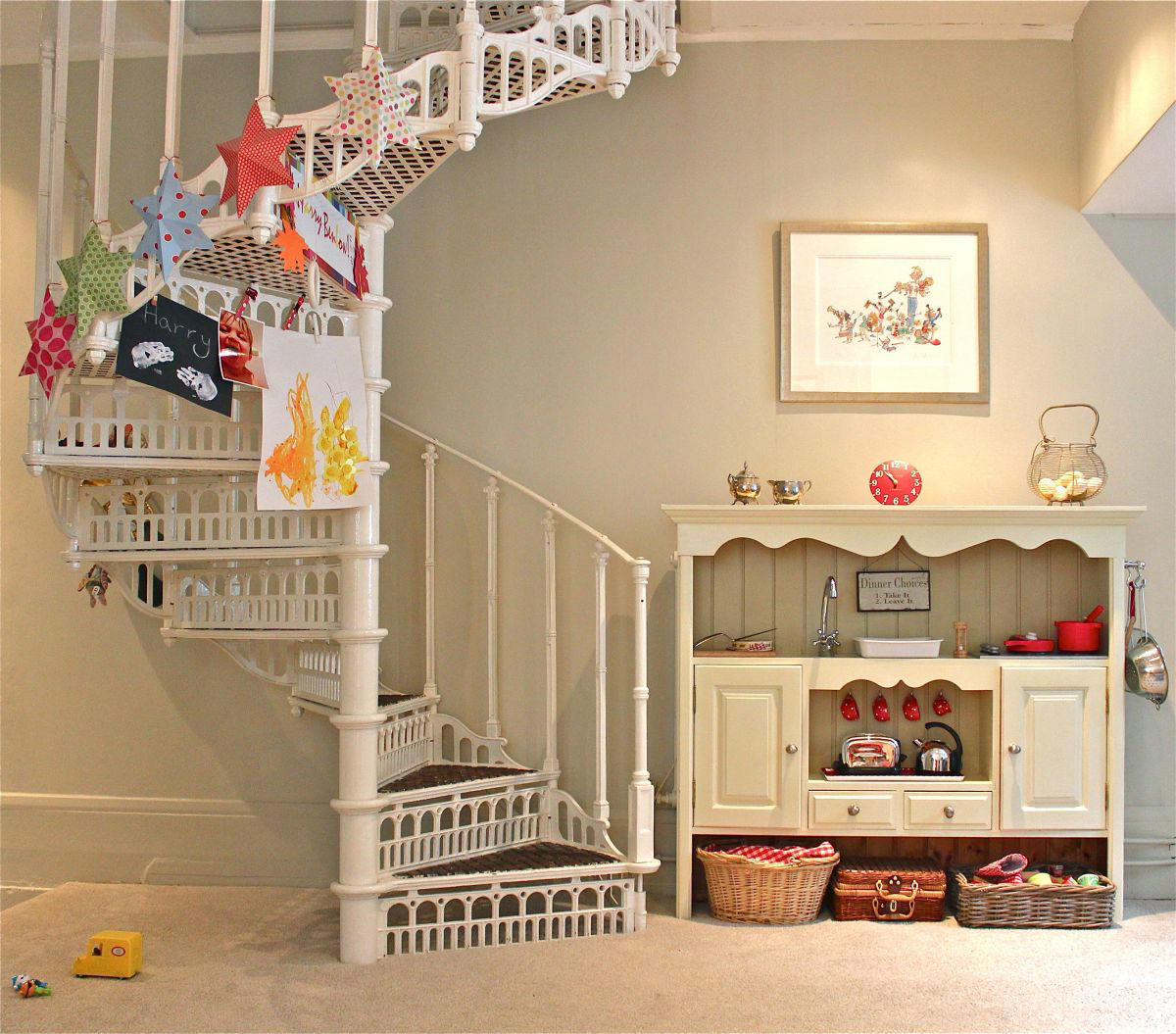
But can you actually *live* with a spiral staircase?
It’s the number one question for a reason. For secondary access, like to a library loft or a quiet home office, they are fantastic space-saving solutions. But as your primary staircase? Think carefully. Carrying a laundry basket is manageable, but moving a mattress or a new armchair up a spiral is often impossible without an alternative route. If you have young children or family members with mobility issues, the narrow, tapering treads can also pose a daily challenge. The key is to honestly assess its function before falling for its form.
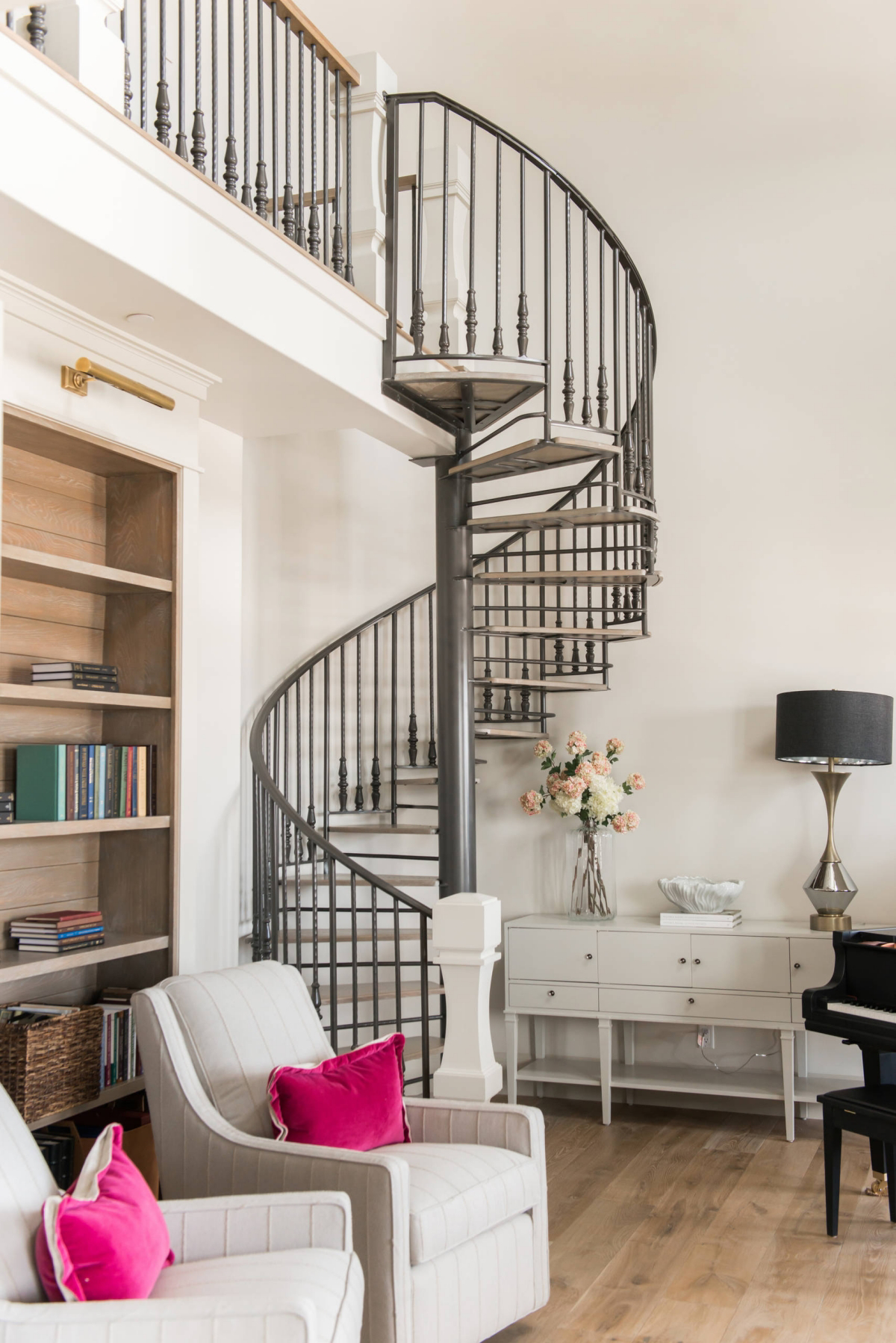
Steel: Offers a sleek, industrial, or minimalist look. Forged or powder-coated steel from specialists like Paragon Stairs provides immense strength and allows for very thin profiles, maximizing the sense of light and space.
Wood: Brings warmth and a classic, sculptural feel. Solid oak or walnut treads create a feeling of substance and tradition. Companies like The Iron Shop often combine wood treads with metal structures for a popular mixed-material style.
The choice deeply influences the room’s atmosphere, not just its function.
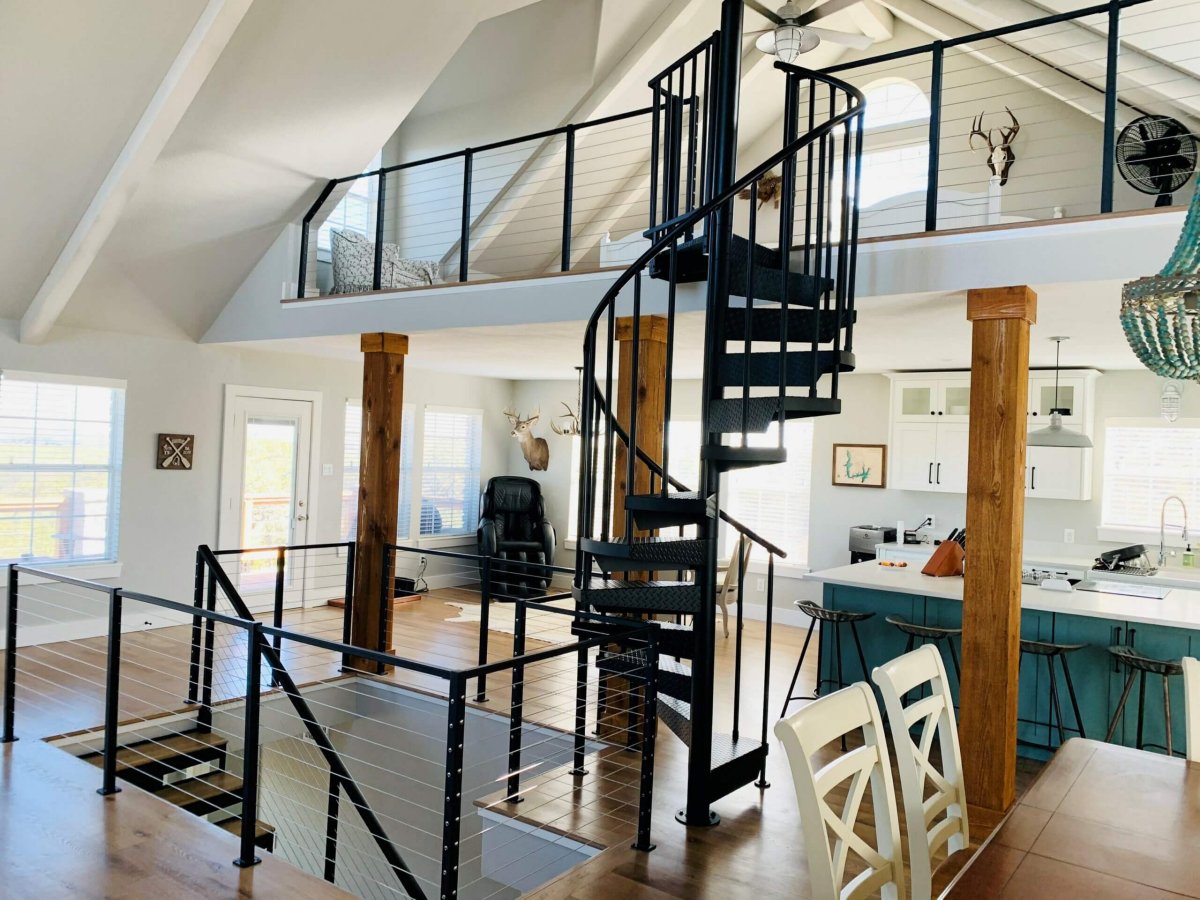
The famous Bramante Staircase in the Vatican Museums, designed in 1505, is actually a double helix—two staircases twisting together so that traffic could flow up and down without meeting.
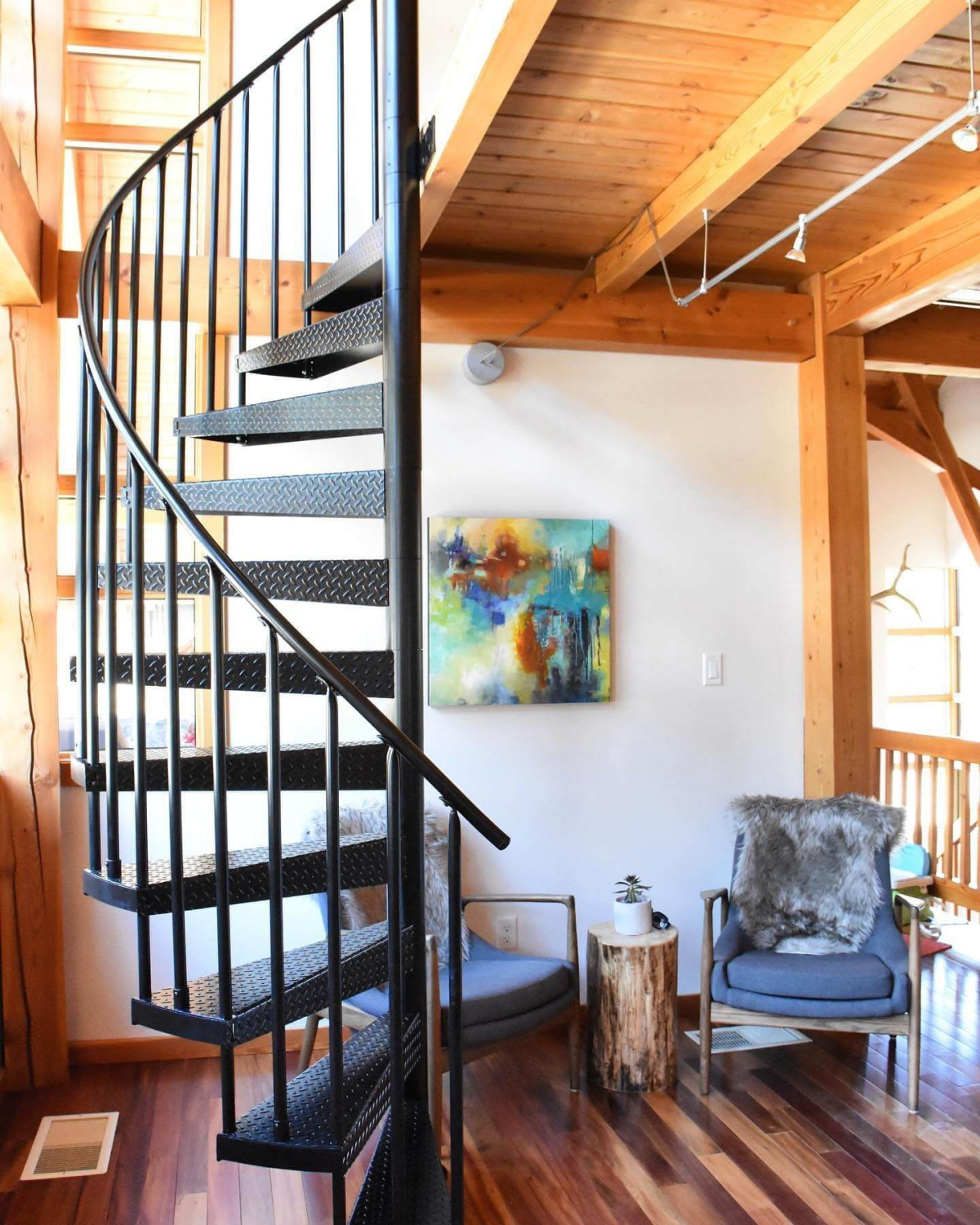
The allure of a ‘stair-in-a-box’ kit, like those from Arke or Dolle, is undeniable. They seem like a straightforward weekend project, but the reality is more complex than assembling furniture.
- Structural Soundness: Your floor joists must be able to handle the concentrated load from the central pole. This often requires reinforcement assessed by a structural engineer, not just a DIY enthusiast.
- Code Compliance: Is the kit you’re buying compliant with your *specific local* building codes, not just a general national standard? The differences can be subtle but critical for inspection.
- Perfect Assembly: There is zero room for error. A slightly off-level base or improperly torqued bolt can compromise the entire structure’s safety and stability over time.
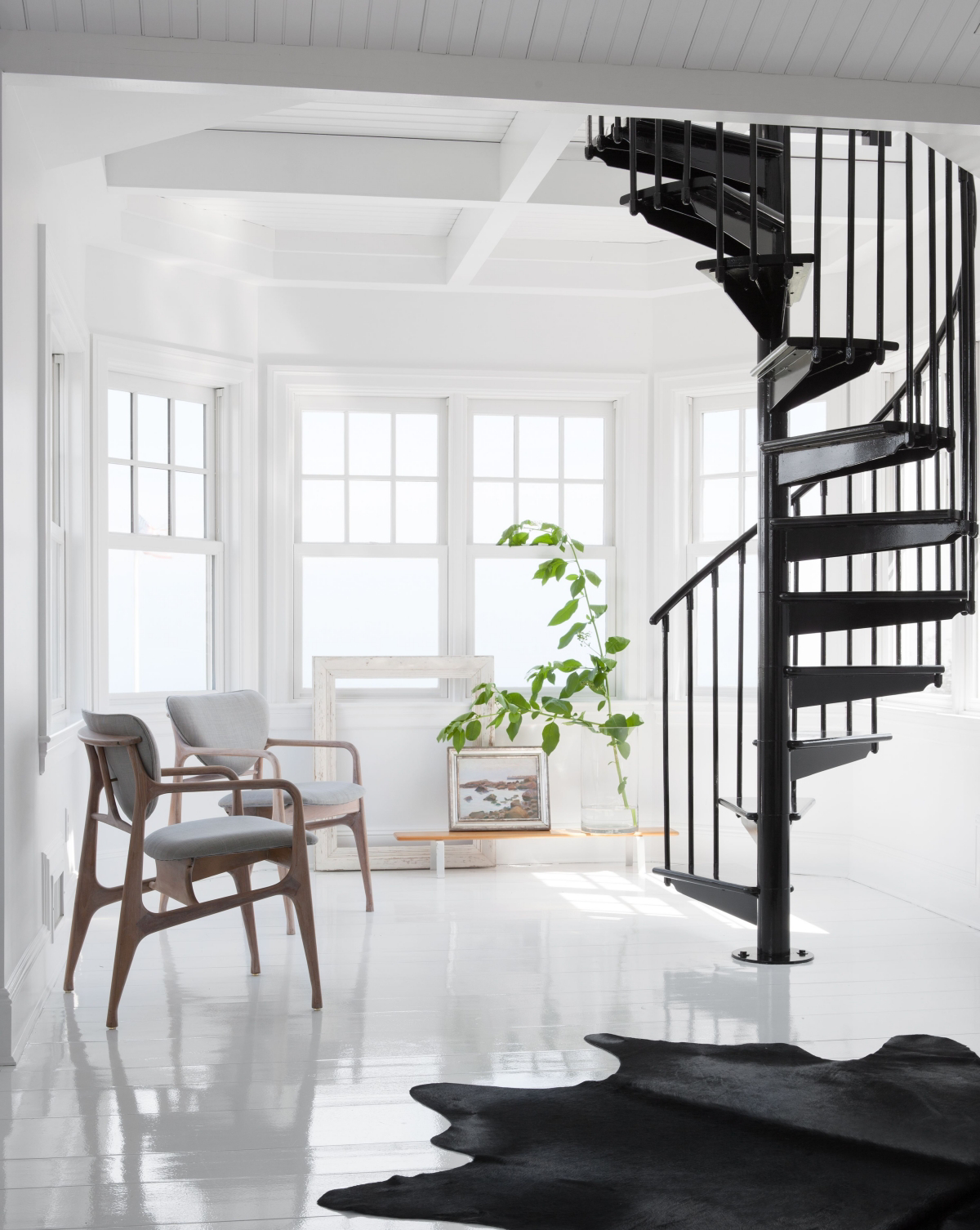
Important point: Building codes are not suggestions. The International Residential Code (IRC) is very specific about spiral stairs. For example, it mandates a minimum clear walking path of at least 26 inches (66 cm) from the handrail to the center pole. Furthermore, each tread must be at least 7.5 inches (19 cm) deep at a point 12 inches from its narrow end. A miscalculation of a single inch can mean your staircase fails inspection, resulting in a costly tear-out.
Beyond the classic wood or black metal, today’s spiral staircases embrace bold design. We’re seeing a trend towards ‘floating’ treads made of thick acrylic or laminated glass for an almost invisible look in modern homes. Another popular direction is combining materials: warm oak treads on a stark white steel frame, or a continuous handrail wrapped in rich leather. Color is also making a comeback, with central columns painted in vibrant, contrasting hues to turn the staircase into a true sculptural centerpiece.










